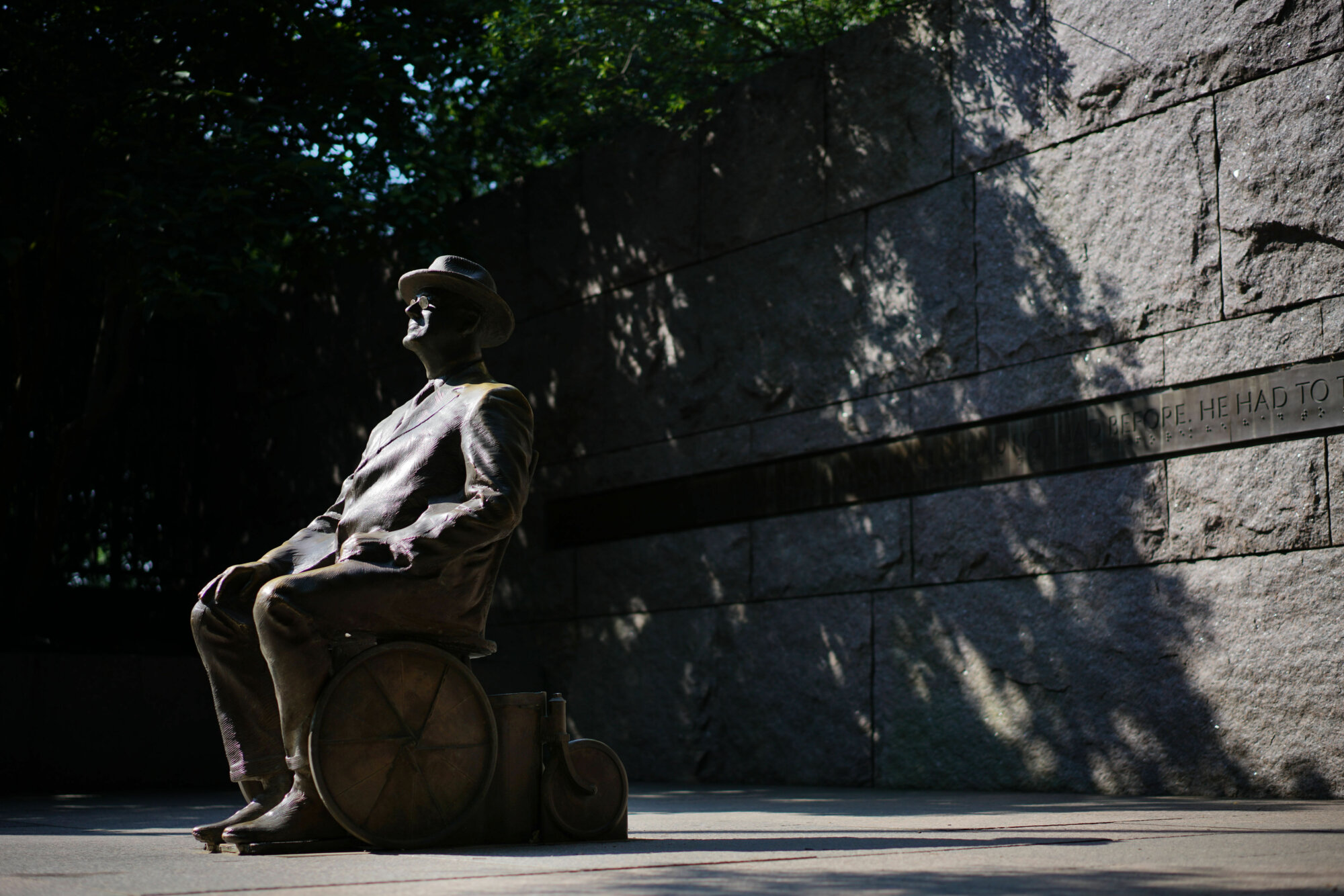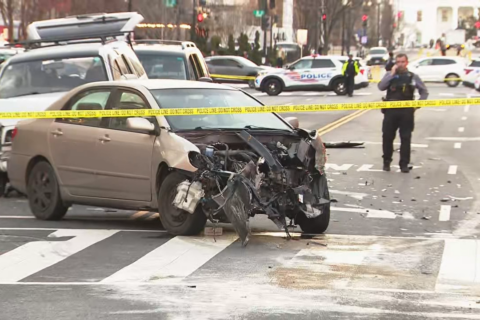
This month’s 20-year anniversary of a wheelchair being added to a presidential memorial in D.C. is being celebrated as a victory for inclusion by disability advocates.
When the Franklin Delano Roosevelt Memorial was dedicated along the Tidal Basin in 1997, it didn’t depict him as a person with a disability.
But a statue of the 32nd president sitting in his wheelchair was dedicated in January 2001 after a “tremendous effort” by the disability community that was supported by 16 of his grandchildren and 50 disability organizations, according to the executive director of the FDR Memorial Legacy Committee.
“Having that image is important for representation to remind people what is possible,” Mary Dolan said. “It’s also just accurate — that’s how he lived his life. Why would we hide that?”
Getting the wheelchair statue added is a victory for disability representation for “all sorts of marginalized, underrepresented, unrepresented communities,” said Dolan, who added that Roosevelt’s disability shouldn’t be seen as anything particularly special.
“It is absolutely important for us to remember that … having a disability is part of life and guess what? You can also still become president of the United States,” she said.
The FDR Memorial Legacy Committee is now appealing to the National Park Service to address flooding, preservation maintenance and upkeep at the memorial.
There also are concerns about making the site more accessible for those with disabilities, such as those who are visually impaired.
Some inscriptions on the memorial in Braille are either too high up for most people to reach or include overly large dots that are indecipherable to people using touch to try to read them.
CBS News reported that there were bad Braille signs across the U.S., and that the Braille on the FDR memorial was “part of the artist’s design of the memorial,” and was “not necessarily intended as accessibility elements” for the blind,” the National Park Service told CBS News.
Dolan said the Park Service should work to make sure the FDR Memorial and all memorials are fully inclusive.
“We’ve given them a whole plan of action, including some experts in the field of access and inclusion at cultural sites,” Dolan said.








